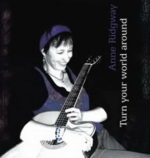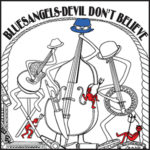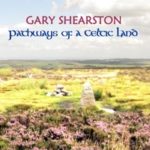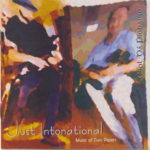Description
About the music
by Julie Gittus
Certain tunes, when you first hear them, touch something deep inside. This profound connection often sparks a longing to store that particular piece within one’s own musical and emotional repertoire.
Every tune on this recording has touched that sweet spot in all three of us, with each tune now holding stories of our lives.
This sense of story and connection is inherent within most traditional music. The tunes on this recording are rich with many other histories, having been played and shared over decades around kitchen tables and campfires, on verandas and in church halls. We feel privileged to be able to partake in this ongoing tradition.
In the recording process, we tried to reflect the way in which we played music at home or with friends. We had no well-rehearsed set list, but rather simply sat down and played whatever tune occurred to us at the time. There were minimal takes. A special thank you to Mark Woods of Bald Hill Recording studio in Carisbrook for being supportive of what we were attempting to achieve.
A special thank you to Dave de Hugard for so generously sharing his profound knowledge of Australian traditional music as well as his sublime arrangements of the tunes.
And most importantly, heart felt thanks to Ian White, not just for his musical sensibility and banjo – guitar accompaniments on this recording, but also his unwavering appreciation of our music. Without his friendship and encouragement this gathering of tunes would never have happened.
CD Review by Julie Castles
With waltzes, mazurkas, varsoviennas and schottisches, this album bring us traditional music as it was meant to be heard, simply presented and straight from the heart.
Recorded with minimal takes, there is an honest, home-made feel to this CD and Julie Gittus’s enthusiastic comments have been left in.
Her instrument, modelled on the Norwegian Hardanger fiddle, has a warm, melodious sound, with Dave Gittus’s single reed accordion specially tuned to suit this violin.
Their rich, mellow sound is augmented by Ian White’s tasteful accompaniment.
The tune selection reflects the multicultural story of our heritage.
Complementing a range of traditional Australian dance tunes, are items such as the Swedish Boda Waltz, a contemporary waltz from the U.S., a Mexican Waltz and a set of Irish mazurkas.
Up tempo jigs and polkas have been left for another day.
These are, indeed, the pretty tunes, and a moderate tempo throughout ensures that we hear every note.
The tradition of passing down the tunes continues, and the Gittuses acknowledge arrangements suggested by others, as well as the tune sources.
The Dooley Chapman set, for example, is a pairing of Chapman’s tunes passed on by Dave de Hugard; The Bell Tune, and the superbly titled Dressed in Rags Without a Bob.
Mazurkas played slowly are well suited to harmonisation.
Learned from Jacko Kevans, the Home Sweet Home Mazurka played here, is interwoven with harmony in a version which contrasts with Kevans’ more lively rendition.
Singers often speak of “owning” a song, in the sense that it is cherished and becomes a part of the singer.
The same can be said for musicians, and this is evidenced here in the sweet, harmonious playing of these tunes.
With a growing number of musicians wanting to learn from our own tradition, this CD is a welcome addition to the large trove of collected music now available in print.
CD Review by Tony Smith
No less an authority than Russell Crow reckoned on television recently, that the pandemic lockdown was good for decluttering his head and letting him relax.
Listening to All the Pretty Waltzes, you can achieve the relaxation without the inconvenience of the lockdown.
Dave Gittus (button accordion), Julie Gittus (fiddle) and Ian White.(banjo and guitar), are a trio who celebrate Australian settler dances.
As well as waltzes, they bring to life mazurkas, varsoviennas and schottisches.
A fourth person, who is consistently present in these pieces, is Dave De Hugard.
Dave has collected an enormous range of songs and tunes and presented them in playable arrangements.
A large percentage of tunes labelled ‘Australian traditional’ could also be subtitled ‘collected and arranged by Dave De Hugard’.
This is an unpretentious CD with little sleeve information, apart from the names of the players and their instruments and the names of the tunes – what you might have enjoyed in a country community hall in the horse and buggy days.
The music also evokes images of a family sitting around the wireless, children after their baths sitting on the floor by the fire colouring in, while the parents enjoy a Sunday night wind down.
Although the tunes have been selected because each holds a special place in the hearts of the players, they have grand general appeal.
They are far from a narrow selection.
Whether listening to the music as background to other activities or swinging your partner around the kitchen, you will enjoy the variety here.
There is influence from New Mexico (Waltz de Cadena), Sweden (A Swedish Waltz and Boda Waltz) and contemporary America (I Always Knew That You Were the One) as well as predictably, Ireland (St John’s Mazurka, Kitty’s Fancy and St Ann’s Mazurka).
Otherwise, the tracks are of traditional Australian tunes.
Some are popular like Rita Baker’s Schottisches; and Bill Large’s Second Waltz, while many players will be rushing to add The Tassie Tunes and The Three Varsoviennas to their repertoires.
The balance of the instruments is pretty well perfect.
I particularly enjoy the banjo and the way it produces a ground which in other ensembles might be provided by a bass (bush or otherwise).
The accordion and fiddle carry the melodies in ways faithful to the nature of these pieces.
The minor sound of Boda Waltz brings the accordion into its own and the fiddle is always sympathetic to the fact that these are dance tunes.
Anyone who has attended Dancefest at Bundanoon knows that tunes come to life when they set dancers in motion.
It is always easy to imagine Julie Gittus watching the dancers and subtly interacting with their movements.
I could sometimes wish one of the performers might grab the microphone and sing words to a song Home Sweet Home for example, for the sake of variety.
This did happen in such dance venues, but it is not necessary.
In a nice touch, the players list the Australian makers of their beloved instruments.
Whether you call these bush tunes or settler tunes or the tunes of colonial Australia, this CD is an important historical resource.
No-one will be made wealthier by these ‘pretty waltzes’ but lives will be enriched.




